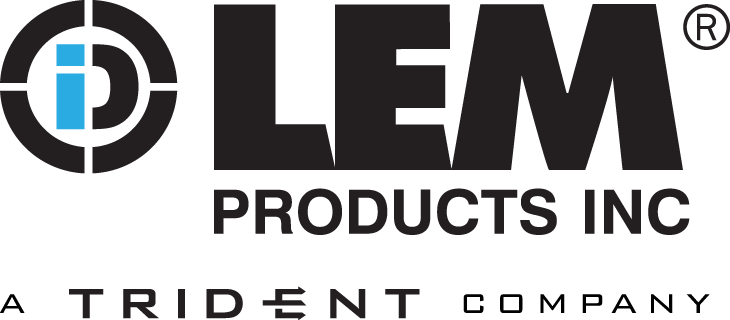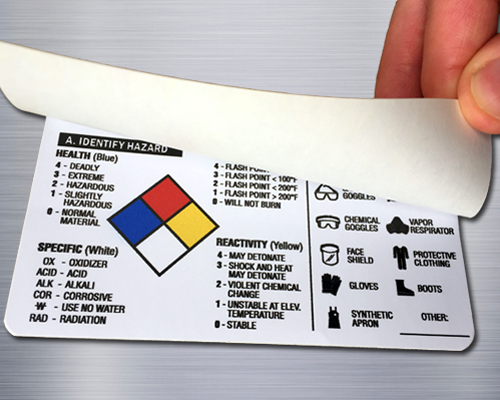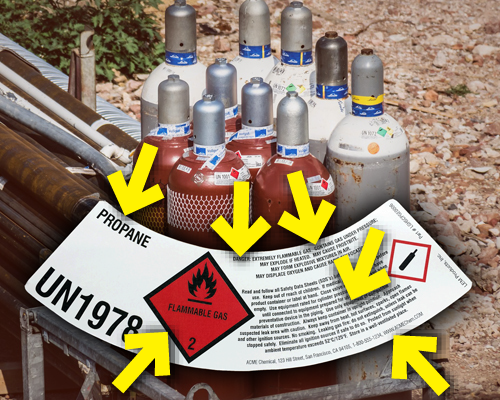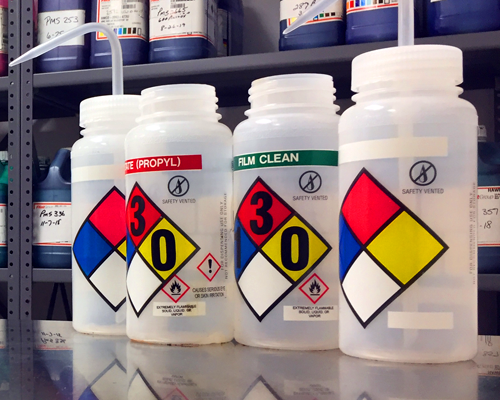OSHA & ANSI Compliant Labels
In the workplace, OSHA and ANSI dictate the standards to which employees and signage must comply. OSHA and ANSI codes stipulate that all workplaces must place clear signage warning of potential hazards and provide stringent guidelines for safety standards. Among the many OSHA and ANSI-compliant label options is the Hazard Communication, or HazCom, label.

OSHA Hazard Labels Explained
OSHA-compliant HazCom labels require specialty training to understand thoroughly. Employees who receive HazCom training will be more readily able to comply with the Hazard Communication Standard (HCS). OSHA and ANSI-compliant safety labels will feature coded language and industry-specific symbols. Trained employees will be able to readily decipher the necessary information and inform others of the best practices for the worksite.
Labels for Product, Chemicals, Temporary & Secondary
What’s on an OSHA and ANSI-compliant Hazard Communication label?
Hazard Communication labels must contain six important pieces of information, including:
- Product Identifier: Must contain the product name and chemical number
- Signal Words: Signal words are words like DANGER and WARNING
- Pictograms: Pictograms will be placed inside of a red diamond. There are nine standard pictograms
- Hazard Statement: Describes the nature of the hazard (ex: flammable liquid)
- Precautionary Statement: Instructs people on how to reduce hazard-risk, including proper PPE
- Supplier Identification: Must include contact information if additional information is needed about the supplier
Secondary Labels
Manufacturers label their products in accordance with OSHA and ANSI standards, but it’s not always practical to provide all the above information on small containers of chemicals with their original labels. In these cases, secondary labels must be generated. One way to streamline this process is by generating pre-made labels for the most commonly used chemicals on a worksite. Pre-made labels ensure that all the necessary information is provided on the secondary labels, and it minimizes the room for error.
There are a few situations in which secondary labels are not considered necessary. All containers holding a potentially hazardous substance must be labeled unless it meets all of the below criteria:
- The container will only hold the chemical for one work shift or less
- Only the person who filled the container will have access to the container during this time
- The person who filled the container will not leave it unattended at any time
For more information about our OSHA and ANSI-compliant labels, weather-resistant labels, and transformer labels, contact us today!



